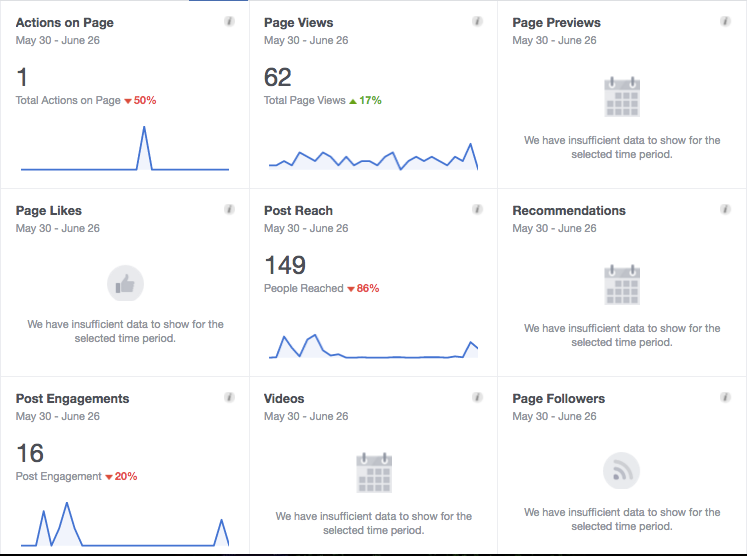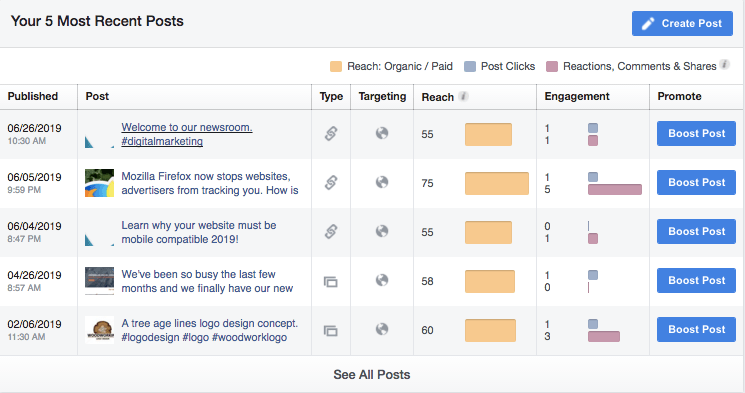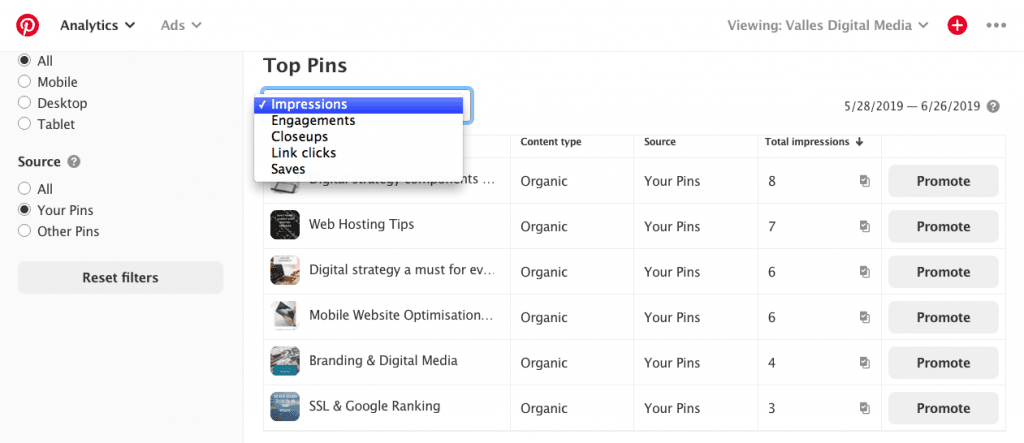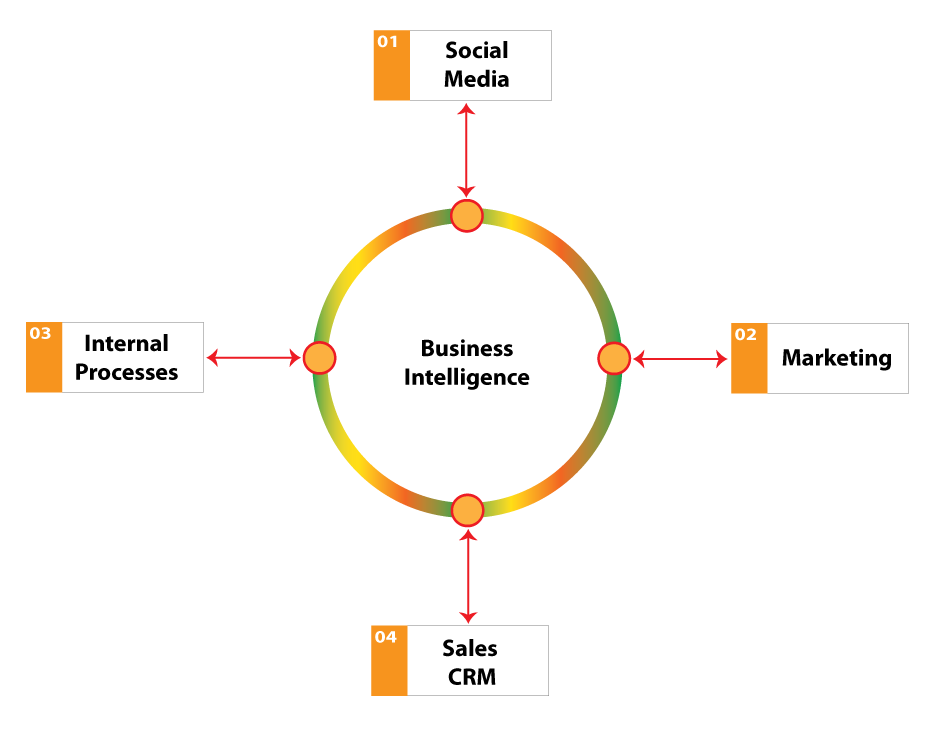Updated By Les. Jan 2022
When Valles Digital Marketing was established way back in 2013, all we had was a very simple website built using Microsoft Sharepoint with very minimal content. We did not have any information about website usage statistics or social media insights on how the external world viewed our brand then. Fast-forward 6 years to 2019, our company website is now in its fourth version, much more advanced than our first.
Like every business owner including us, we need some form of business intelligence about our brand. Our websites play a key role in demonstrating our capability and allows us to engage with potential clients.
Reviewing website usage statistics does not necessarily provide all the answers. If your website is linked to Google Analytics, it can reveal a lot of information including bounce rate, site sessions, site pageviews, sources of traffic (i.e. country, city etc.), web browsers used, engagement channels (i.e. organic, social, direct or referral), search terms used that displayed impressions of the website and many more. The challenge with this kind of traffic information is that it does not necessarily enlighten a business about how its’ brand is perceived in the marketplace.
This is where social media insights can offer a different perspective. Every business should consider using social media to promote their brand, product or service. Requirements vary from business to business but social media is a very handy tool.
The 2018 Yellow Social Media Report from Sensis highlighted some interesting facts:
- 79% participation rate (8 in 10 people).
- 59% of people accessed social media every day or most days.
- 71% use social media in the evening while 57% use it first thing in the morning.
- Facebook has a 94% market share followed by Instagram (46%), Snapchat (40%), Twitter (32%), Linked (18%), and Pinterest (10%).
- 64% of customers will trust a brand if there is positive social media interaction with the brand.
- 47% small and medium businesses are on social media, 49% for medium businesses and 60% for large businesses.
- 79% of Australians are on social media.
- 26% of small business advertised on social media, 35% for medium businesses and 42% for large businesses.
The statistics above strongly suggest that using social media to promote your brand is a worthwhile effort. Furthermore, social media allows businesses to interact with potential customers to build trust and this will eventually lead to sales opportunities.
Platforms such as Facebook, Twitter or Pinterest offer social media analytics data. The analytics data draws a picture about how a brand is performing. Facebook calls it Insights, Twitter offers Analytics and Pinterest includes an Analytics feature.
To access Facebook Insights, navigate to your Facebook business page and click on Insights on the top menu. Insight offers a number of key metrics about a Facebook business page:
- Actions on Page – The number of clicks on the Page’s contact information and call-to-action button.
- Page Views – The number of times the Page’s profile was viewed by logged in and logged out people.
- Page Likes – How many people liked your page.
- Post Reach – How many people saw all the posted content.
- Post Engagements – How many people liked, shared, or commented on posts.
- Page Followers – How many people are following the page.
See the example below.

If your business posts regularly on Facebook, Insight also shares the performance of every post. Below is a snapshot from our Page.

To access Analytics on your Twitter business page, click Profile and Settings icon on the top menu next to the Tweet button. Below is an example of our Twitter Analytics page:

Over a 28-day period, we submitted 18 tweets that generated 2,503 impressions. Tweet impressions metric refers to the number of times a tweet shows up in somebody’s timeline. We also had 16 visits to our profile and secured 4 new followers in the period. We also got 2 mentions i.e. someone tweeted and included our username.
On Pinterest, navigate to your business page. Click Analytics on the top left of the menu bar on your Pinterest business hub page (see below example). For each of your Pins, we get:
- Impressions – The total number of times your Pins were shown.
- Engagements – The total number of engagements on your Pins. This includes saves, closeups, and link clicks.
- Closeups – The total number of times people viewed a close-up version of your Pin.
- Saves – The total number of times people saved your Pins to a board.
- Link clicks – The total number of times people have clicked through to your destination URL on your Pin from Pinterest.

Business Intelligence Process
As outlined above, these social media platforms do provide useful metrics for any business to analyse. Use these metrics to develop trends (trends, user interaction etc.). It allows a business to build a holistic picture of their brand and how the market perceives the brand.
At Valles Digital Marketing, we have an overall business intelligence process model (see below), which has social media analytics as a key component. Without relevant and accurate social media analytics data we are missing key relevant facts about our brand. We cannot make informed decision about the business and our brand.

Intelligence gathered has helped us to shape our social media marketing strategy and campaigns to target segments of the market where our potential customers are. Our social media content creation is now targeted and relevant to our target audience. We optimize our social media advertising for maximum impact in the pursuit of qualified leads.
We used the intelligence data to enhance our internal processes for efficiency. Feedback from customers and interactions with followers allowed us to modify our operations to focus on customer satisfaction and retention. We also modified our service offerings in line with customer and market expectations.
As a result of this process, we now have in place a simple customer relationship system (CRM). This CRM will allow us to reach our customers and followers through future email marketing and social media advertising including promotions.
The process model has allowed us to be competitive in the marketplace with social media playing a key role in understanding how our brand performs and is perceived. We repeat the process regularly to review and strategise with the aim of becoming the #1 digital marketing agency in our geographical region.
So if your business is not on social media, it is time to jump on the bandwagon. Use social media insights to supplement your brand development. If your business is already creating content and marketing on social media then take advantage of the social media insights data freely available in these platforms to build a picture of your brand and its’ affinity in the marketplace. Getting it right will ensure your social media content marketing gets in front of the right audience at the right time with the goal of securing qualified leads.
For the visually impaired, here is an audio version of this blog.

